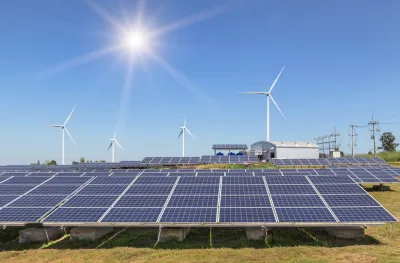A regulatory change at the federal level will shorten the time it takes clean energy projects to gain approval and start providing energy to the grid.

Changes to a federal rule will let clean energy reach the grid faster, reports Justine Calma in The Verge.
“As it is now, it takes an average of five years for a new energy project to connect to the grid. There’s a huge backlog of more than 2,000 gigawatts of clean energy generation and storage that’s just waiting in line for approval. That’s about as much capacity as the nation’s existing power plants have for generating electricity today,” Calma explains.
To clear the backlog, the new federal rule will require grid managers to assess projects in clusters instead of one at a time. They’ll also face firm deadlines and penalties for failing to finish interconnection studies on time. The new rule prioritizes projects that are the farthest along in development and also includes new requirements for project developers, like financial deposits to discourage them from proposing projects that might not pull through.
Clean energy advocates cheered the regulatory changes, which could go a long way toward achieving a 100 percent renewable power grid by 2035, the goal set by the Biden administration.
FULL STORY: Adding clean energy to the US power grid just got a lot easier

National Parks Layoffs Will Cause Communities to Lose Billions
Thousands of essential park workers were laid off this week, just before the busy spring break season.

Retro-silient?: America’s First “Eco-burb,” The Woodlands Turns 50
A master-planned community north of Houston offers lessons on green infrastructure and resilient design, but falls short of its founder’s lofty affordability and walkability goals.

Delivering for America Plan Will Downgrade Mail Service in at Least 49.5 Percent of Zip Codes
Republican and Democrat lawmakers criticize the plan for its disproportionate negative impact on rural communities.

Test News Post 1
This is a summary

Test News Headline 46
Test for the image on the front page.

Balancing Bombs and Butterflies: How the National Guard Protects a Rare Species
The National Guard at Fort Indiantown Gap uses GIS technology and land management strategies to balance military training with conservation efforts, ensuring the survival of the rare eastern regal fritillary butterfly.
Urban Design for Planners 1: Software Tools
This six-course series explores essential urban design concepts using open source software and equips planners with the tools they need to participate fully in the urban design process.
Planning for Universal Design
Learn the tools for implementing Universal Design in planning regulations.
EMC Planning Group, Inc.
Planetizen
Planetizen
Mpact (formerly Rail~Volution)
Great Falls Development Authority, Inc.
HUDs Office of Policy Development and Research
NYU Wagner Graduate School of Public Service





























